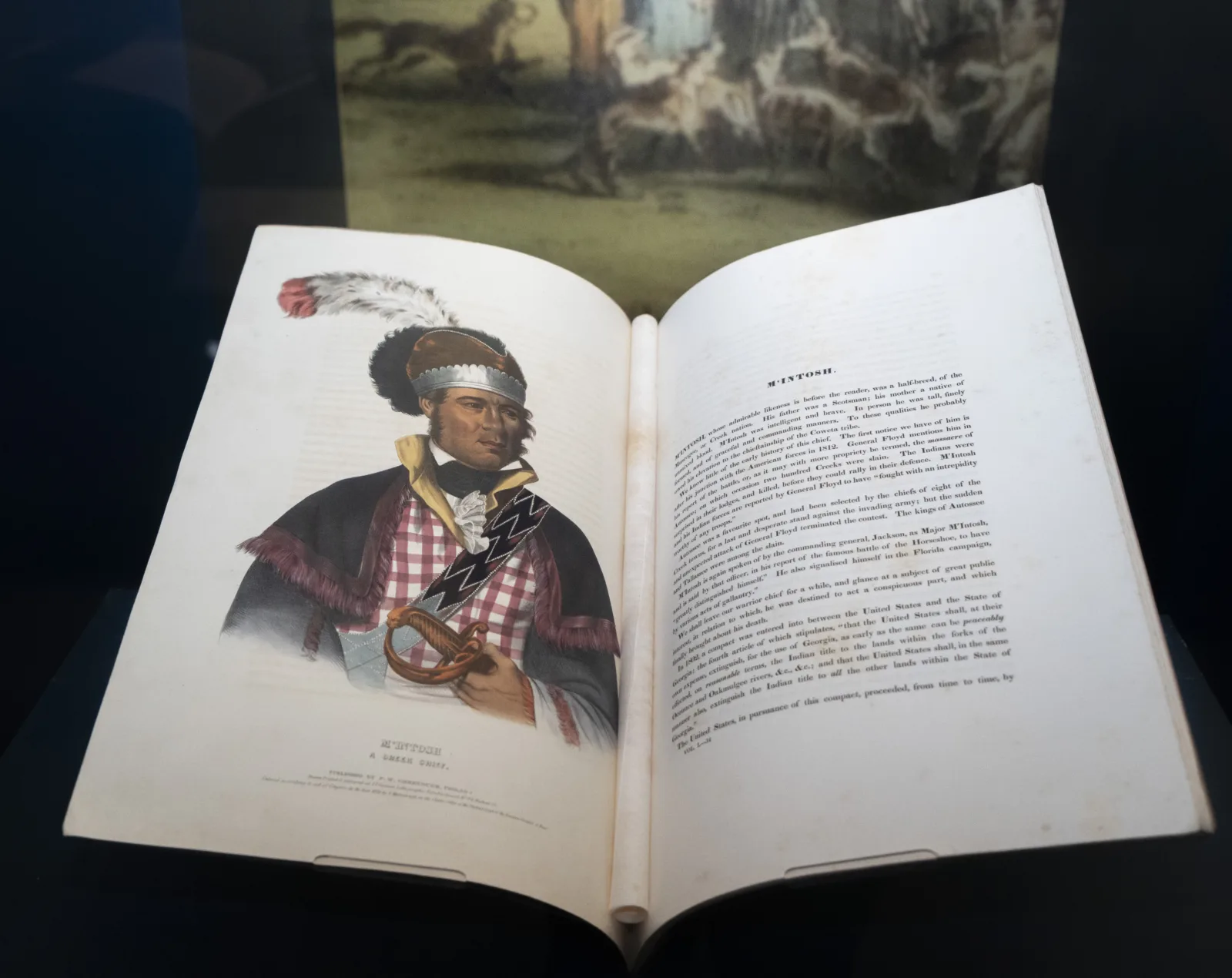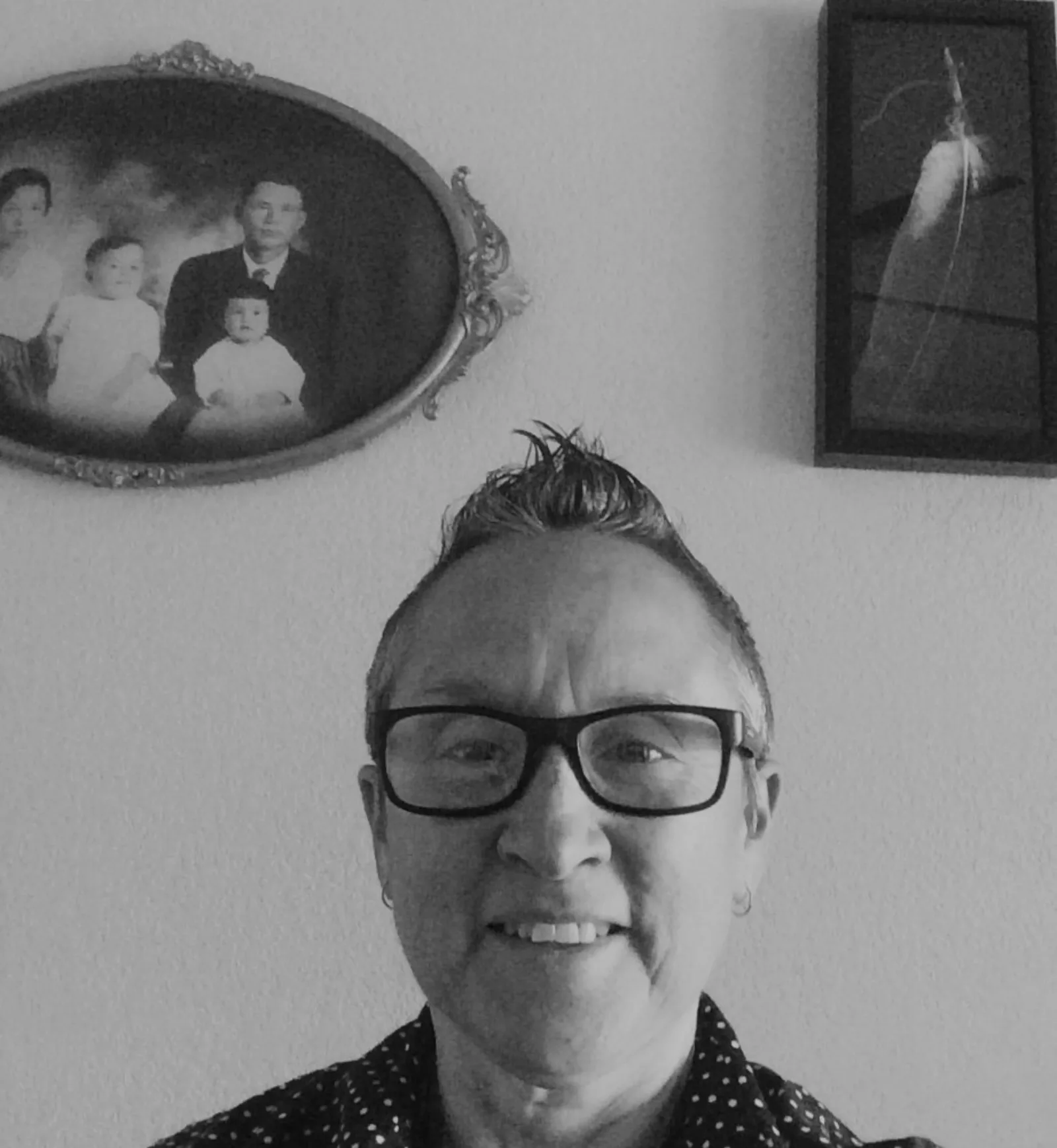As an oral historian for the Muscogee (Creek) Nation and descendent of William McIntosh Jr., Midge Dellinger has a unique perspective on the struggles of early to mid-nineteenth century Indigenous people. McIntosh was a Mekko, or Chief, of the Lower Muscogee in a time when settlers were colonizing the southeastern United States.
Midge is among the tribal representatives who wrote biographical descriptions for the Newberry’s Indigenous Portraits Unbound exhibition, running now through March 30. She sees her role as understanding tribal history from all perspectives. The Muscogee (Creek) Nation is a sovereign and self-governed Native American Tribal Nation located in Okmulgee, Oklahoma. The mission of the Historic and Cultural Preservation Department—including Midge’s role as Oral Historian—is to ensure the protection and preservation of valued historic and cultural resources for future generations.
“When you hear the term oral tradition, that's the passage of knowledge through families and generations, communities, and nations,” Midge says. “Indigenous people have been practicing this form of orality since time immemorial. It's always been a part of traditional tribal culture. It’s through those traditions that Indigenous people have really survived. In oral traditions, you find tribal knowledge pertaining to language, culture, tradition, and worldviews.”
Despite that tradition, public histories of the Muscogee (Creek) Nation have largely been written and shared by non-Muscogee people. Academics and historians have controlled the narratives even as oral history methodology began to take hold in the 1960s and 1970s, giving communities that are marginalized a means of sharing history from their experiences.

McIntosh is a Muscogee (Creek) figure with a contested history, born in 1778 to Scotsman William McIntosh, a British Naval Captain, and his wife, Senoya, of the Muscogee Wind Clan. McIntosh, along with other Lower Muscogee headmen and U.S. agents, signed the controversial 1825 Treaty of Indian Springs, which was ratified by the United States.
“William was in favor of moving the Muscogee to lands where they could live in perpetuity without hindrance from the settler population,” Midge said recently. “His life was taken [in 1825] by those Muscogee who opposed removal from their Southeastern homelands.”
“At the end of the day, the federal government wanted Indigenous people to be gone and [William] put himself out there,” Midge continued. “He was a very intelligent person, a very successful businessperson, but he was trying to maneuver these different worlds.” He had three wives, and there's a quote from one of his wives after he was killed, ‘between two fires my husband dies.’”
Midge traveled to Indian Springs, Georgia, and the Indian Springs Hotel and Museum—built by McIntosh in 1823—recently for the first time. There she met with fellow descendants and scholars, setting foot on the land that belonged to her Muscogee (Creek) ancestors prior to removal.
“It was a moving experience to visit my Muscogee homelands,” Midge said, “and because of the experience, I am more determined to have a full understanding of early Muscogee ancestors and the complex lives they lived. To search for a complete and authentic history is the only way to find the truth.”
In Oklahoma, on the Muscogee (Creek) Nation Reservation, Midge’s oral history work focuses on gathering and perpetuating Muscogee culture, tradition, language, life experiences, and history for future generations. Through first-person Muscogee memory and voice, the Muscogee story is told.
Indigenous Portraits Unbound will be on display in the Newberry's Hanson Gallery through March 30.
